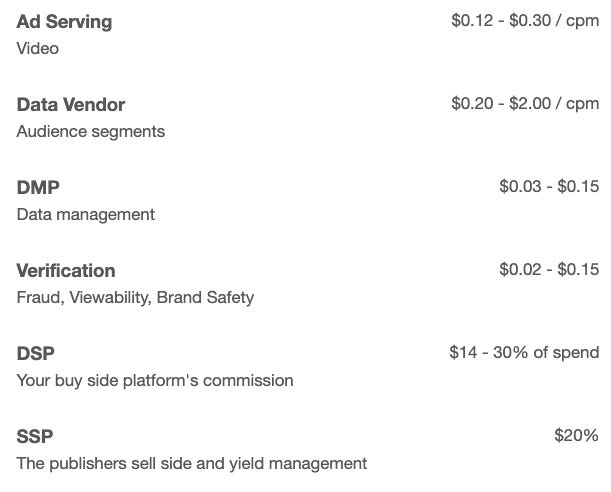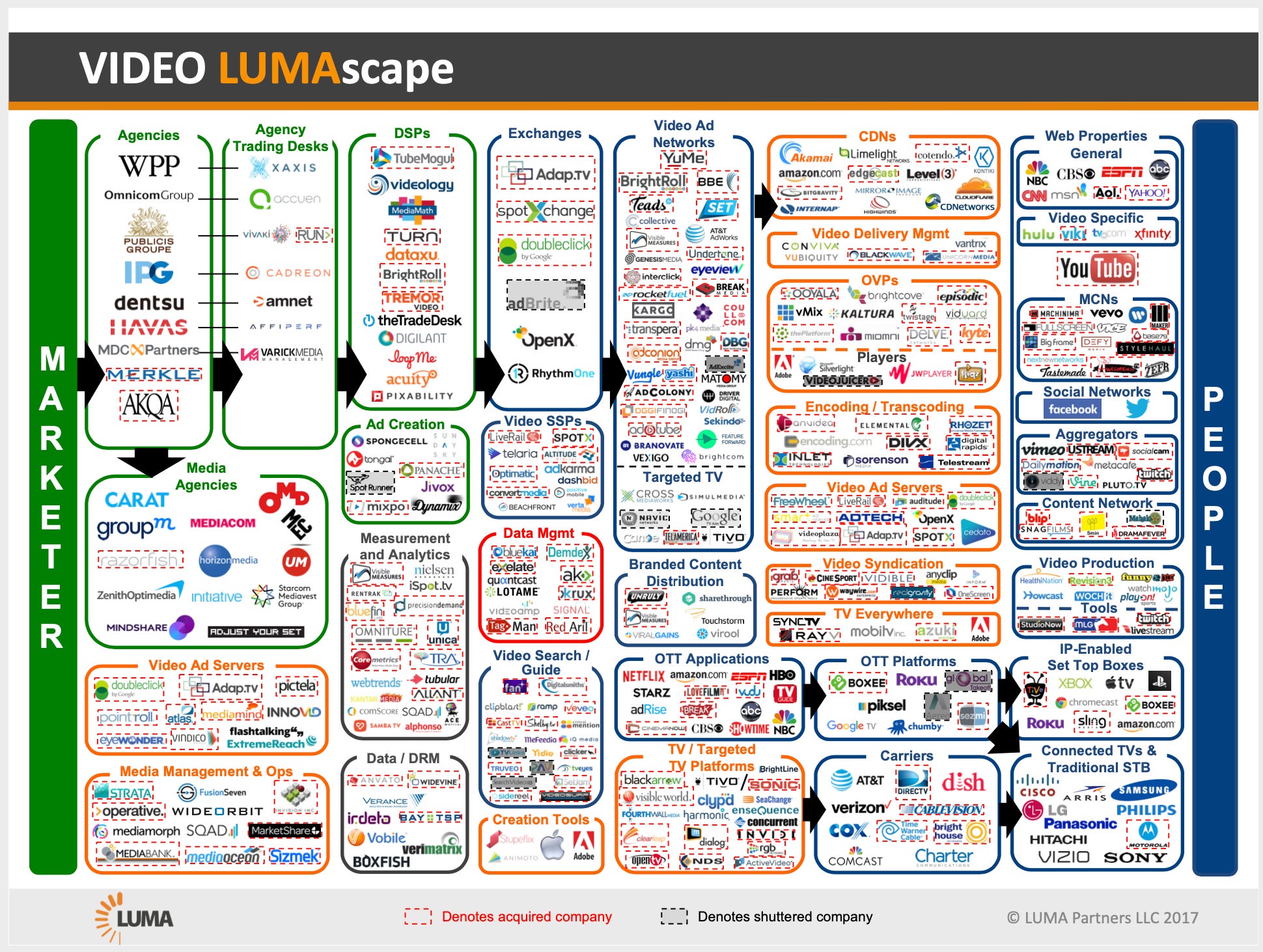There's no such thing as $10/cpm preroll
I'm regularly shocked how little today's media buyers know about the media transaction "funnel." Rarely do they stop and think how much of their spend actually gets spent on actual media.
Working vs Non-Working Media: The dollars spent on consumer facing activities are considered working dollars. For example, the amount actually paid to a publisher or content owner in exchange for ad space. Everything else, such as operational costs, production fees, planning, commissions, etc. is considered non-working.
Most buyers have heard of the term working media. However, most have never spent more than a moment thinking about it because the working vs non-working ratios are sweated further upstream with the client. Agency fees have been a standard component of non-working media since the birth of advertising. However, the "fees" involved in a digital transaction are far more broad and complex than traditional media. I'll explain more in a moment.
Major brand advertisers usually have a diversified approach to placing their online video / preroll buys. Typically it breaks down into a few major distribution points.
- Publisher Direct: Direct buys for preroll inventory with a publisher or content owner. Often packaged with a larger media spend at publishers that operate traditional television or offline businesses.
- Programmatic & Exchange: Inventory purchased through an agency trading desk or demand-side platform (DSP) where the inventory is executed via auction. Popular solution for data-driven audience buys.
- Ad Network: Inventory sourced though a large network aggregator of unsold / remnant inventory. Can have added value components such as audience targeting, etc. applied as a managed service. Great for additional reach. Seen as "efficient" due to low prices.
Generally speaking, larger brands will sprinkle their budgets across a mix of the outlets listed above.
It is important to stop and think about the life of each dollar as it passes through each of these distribution points. $10/cpm on each one of these outlets will yield dramatically different outcomes.
The single largest driver of the differences is money. Period.
Question: When you spend $10/cpm through a video DSP, how much of that money actually makes it to the original site or publisher?
Answer: $2 or $3...on a good day.
At the end of the day, what level of quality would you expect from a $3/cpm preroll? Effectively, that's what you just bought when you spent $10/cpm.
Where'd the rest of the money go? The middlemen.
Fees and other cost associated with a typical programmatic transaction:

This is just sampling of the sort of costs that are under the hood with every programmatic video transaction. The biggest cuts are taken out by the DSP and SSP since they are the platforms representing the buyer and seller in the transaction.
I know we all roll our eyes anytime someone quotes the Lumascape, but think about it. Look at the number of vendors it contains. They're all there for a reason...they aim to take their cut of the advertising pie.

At the end of the transaction, the publisher gets paid, but not before all the vendors get their cut of the action.
Yes, working publisher direct means that more of your dollars actually get to the publisher, and should mean that you are running in a higher quality environment. However, in doing so, you sacrifice things like audience targeting and segmentation.
To be clear, I am not suggesting to abandon programmatic and go publisher direct with all your ad dollars. Quite the contrary.
Instead, media buyers need to dig in. You need to understand where every single penny of your media spend ultimately ends up. Question it, and then question it again. Compare DSP's and exchanges. Demand transparency on all costs and fees.
Also, keep in mind that your agency or holding company may receive rebates from each of your ad tech partners. "Rebates" are a more pleasant term for kickbacks. For example, the agency might get a 10% rebate from a DSP on every dollar over a certain minimum spend level. Those dollars are accounted for and do not end up reaching the publisher either.
Once you have a grasp on the total landscape, negotiate! Start trimming the fat, and eliminating unnecessary expense. Ultimately, the more money that reaches the publisher, the better quality your campaign will receive. From there, you can optimize for performance. But at least you are starting from a baseline level of quality.
Feel free to debate me in the comments section below.
Support Independence
Getting the FREE AdLingo newsletter supports independent commentary, education, and insight into digital advertising.







